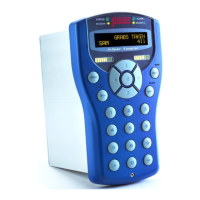PATH =
/$I_START_YEAR$/$C_START_MONTH$/$C_START_DAY$/$S_BATCH_TITLE$_$L_BATCH_ID$.$
I_TOTAL_BATCH_COUNT$
REPORT ENDS
-----------
The report file begins with a series of headings. E.g., “CAMERON JISKOOT QUALITY SYSTEMS”,
“SAMPLER COLLECTION REPORT” etc. The first line of the report that is configurable is:
$S_REPORT_VARIABLE$
This is a register name between two $ symbols. The $ delimiter is used to state when a register name is
being used. In all such instances, the value/contents of the register between the $ symbols is then displayed in
the report. The S_REPORT_VARIABLE register is a string that could contain a value specific to the location/ID
of the sampling installation. Entering a meaningful name/ID here enables it to appear as a heading on each and
every report that is generated.
The following line contains a full report entry with title and associated register name;
BATCH NAME :$S_BATCH_TITLE$
The title can be anything you want it to be. Simply enter the text you want. Of course, it is best
associated with the register name that follows between the two $ symbols. For an alternative language, simply
change the title fields that precede the $register$ to the language of your choice.
The path entry that appears towards the end of the report template file contains the location on the SD
card where the report file is stored. This is the batch directory.
PATH =
/$I_START_YEAR$/$C_START_MONTH$/$C_START_DAY$/$S_BATCH_TITLE$_$L_BATCH_ID$.$I_TOTAL
_BATCH_COUNT$
The template is designed to fit on one side of printed A4 paper. However, the report can be as long as
you wish, and you can be terminated anyway you wish. In the template the text Report Ends’ followed by a short
set of dashed hyphens concludes the file. This is purely cosmetic and plays no part in generating the file.
Three important points:
1) References to register_names must appear between 2 $ symbols - $F_VERSION$
2) If you amend the report template file then make a copy of your custom template files. If the InSpec
has to be defaulted back to factory settings (e.g., software upgrade, re-commissioning) then the report_template
files will revert back to their default formats. You will then have to replace the defaults with the backup of your
custom files.
3) The report_template.htm file is a html version of the report_template.txt file. If you wish to create a
custom version of the .txt report file and wish to reflect the same changes in the .HTM version, then we advise
you to open the .txt template in a text editor that allows you to create and save files in the .htm/.html format. You
can then simply ‘save as’.htm to create a new custom version of the htm file.

